The festivals in Bolivia are a mesmerising fusion of indigenous traditions, Catholic influences, and bold artistic expression. From the Andean highlands to tropical lowlands, each celebration reflects the heart and soul of Bolivia’s diverse cultural landscape. With majestic parades, elaborate masks, ritual dances, and thunderous music, these events are as spiritual as they are spectacular. Whether honouring deities, saints, or seasonal cycles, the famous festivals in Bolivia bring entire communities together in passionate celebration. They offer visitors an unforgettable experience of heritage, belief, and Bolivian pride.
Top Festivals In Bolivia
These best festivals in Bolivia 2025 invite you to immerse yourself in centuries-old traditions, communal joy, and unparalleled spectacle.
1. Carnaval De Oruro
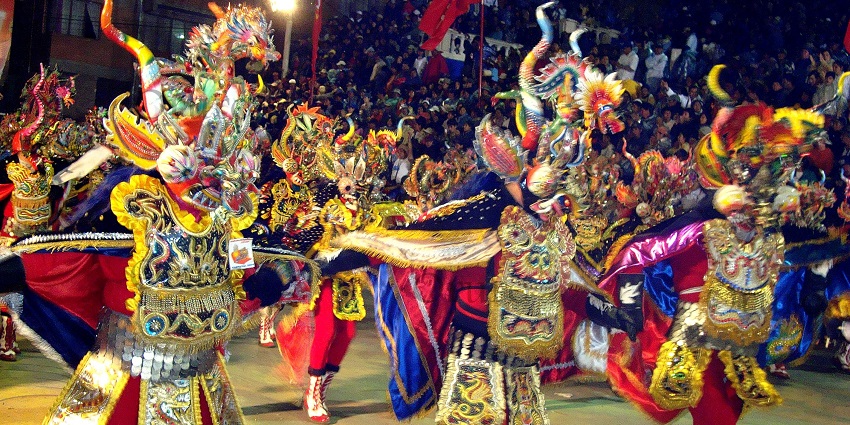
Photo: Pame82s / Wikimedia Commons / Image For Representation Only
Arguably the most famous of all festivals in Bolivia, Carnaval de Oruro is a UNESCO Masterpiece of the Oral and Intangible Heritage of Humanity. This dazzling spectacle blends pre-Columbian Andean rituals with Catholic traditions in a vibrant display of color, music, and dance. The highlight is the “Diablada” (Dance of the Devils), a mythological performance featuring over 50 groups dancing in ornate costumes across a 4-kilometer route.
Location: Oruro
Dates: February
Nearby Attractions: Sanctuary of the Virgin of Socavón, Sajama National Park
2. Gran Poder
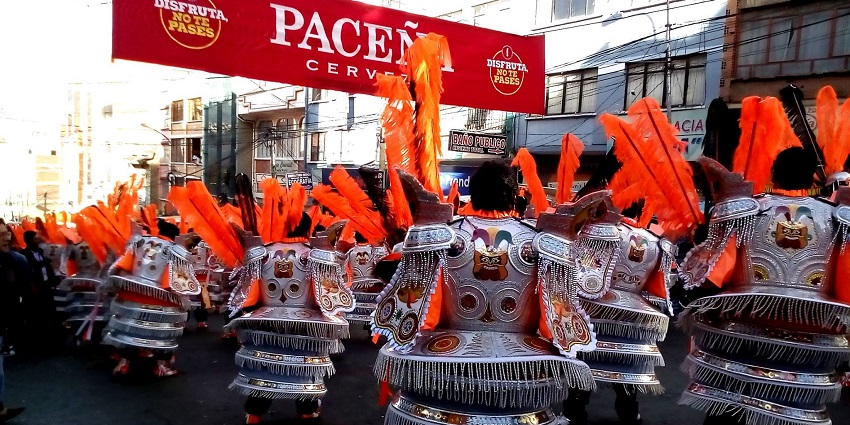
Photo: Trabajo Propio / Wikimedia Commons / Image For Representation Only
Fiesta del Gran Poder is one of the largest religious and cultural festivals in Bolivia. It honors El Señor del Gran Poder (Lord of Great Power), blending Catholic devotion with Aymara cultural pride. Over 40,000 dancers and musicians perform traditional dances like morenada and tinku. The streets of La Paz come alive with spectacular costumes and relentless energy, making this one of the most vibrant festivals in Bolivia 2025.
Location: La Paz
Dates: May or June (date varies)
Nearby Attractions: Witches’ Market, Valle de la Luna
3. Alasitas Fair
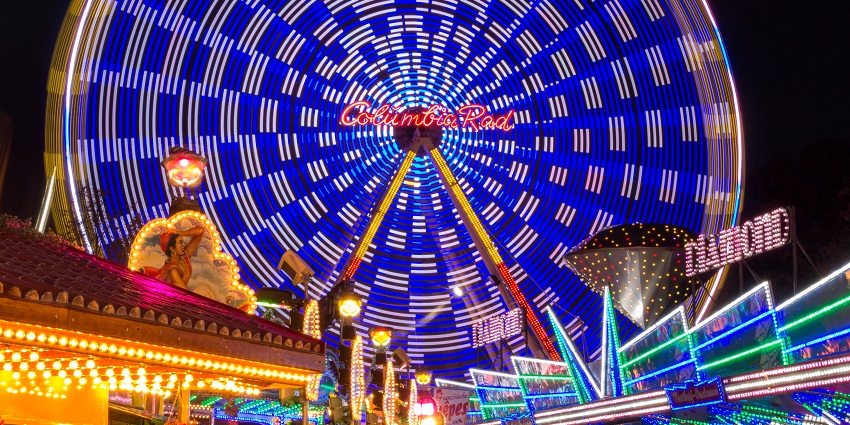
Photo: Dietmar Rabich / Wikimedia Commons / Image For Representation Only
Alasitas is a whimsical and meaningful Aymara festival where people buy miniatures representing their deepest wishes—such as homes, cars, money, food, or academic degrees—believing that Ekeko, the Andean god of abundance, will bring them to life. These tiny items are blessed by priests and yatiris (traditional healers), then gifted or kept. The vibrant markets brim with joy, hope, creativity, and a playful sense of spiritual optimism.
Location: La Paz and nationwide
Dates: January 24
Nearby Attractions: Plaza Murillo, Museo Nacional de Etnografía y Folklore
4. Fiesta de la Virgen de Urkupina
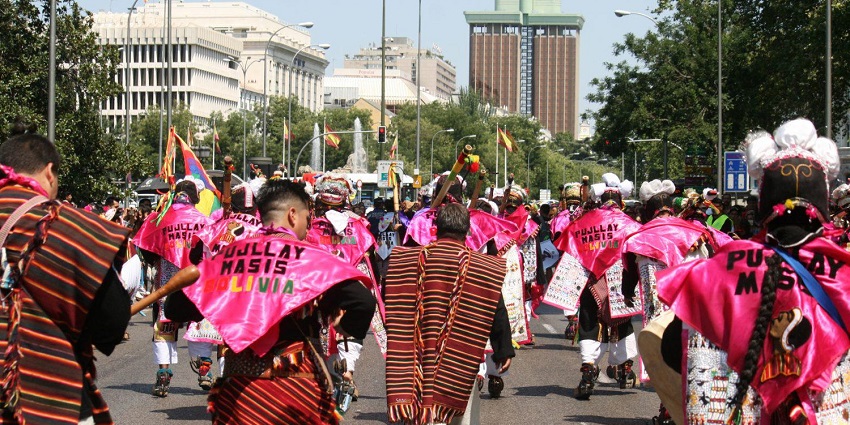
Photo: Diario de Madrid / Wikimedia Commons / Image For Representation Only
Held in the vibrant town of Quillacollo, this religious and folkloric festival honors the Virgin of Urkupiña, revered as the patroness of national unity and miracles. Each August, thousands of pilgrims and dancers flood the streets for dazzling processions, traditional music, and folkloric dance. A key ritual involves chipping stones from Calvary Hill, symbolizing hopes for wealth and prosperity. The festival is a profound blend of Catholic and indigenous spirituality
Location: Quillacollo, Cochabamba
Dates: August 14–16
Nearby Attractions: Pairumani Park, Cristo de la Concordia
5. Tinku Festival
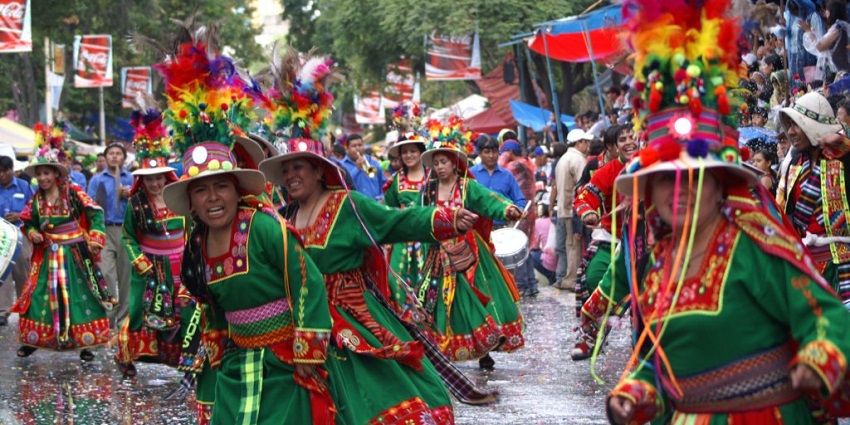
Photo: CassandraW1 / Wikimedia Commons / Image For Representation Only
The Tinku Festival is a fierce and symbolic ritual of the Quechua people, where communities engage in ceremonial combat believed to appease Pachamama (Mother Earth). While it may appear intense, Tinku is a sacred rite of fertility and balance, with music and dance surrounding the confrontations. It’s one of the most intense and ancient traditions among the famous festivals in Bolivia.
Location: Northern Potosí
Dates: Early May
Nearby Attractions: Cerro Rico, National Mint of Bolivia
6. Semana Santa
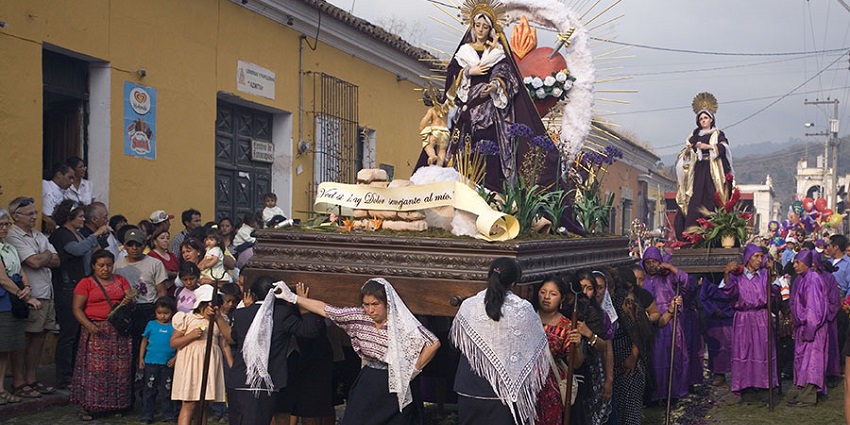
Photo: Jialiang Gao / Wikimedia Commons
Holy Week in Bolivia is a deeply reverent and emotional time, especially in cities like Sucre and Copacabana. Streets fill with candlelit processions, live reenactments of the Passion of Christ, and traditional hymns echoing through colonial plazas. Locals wear mourning attire, carrying statues of saints and weeping Madonnas. Blending Catholic devotion with indigenous beliefs, the week becomes a powerful expression of collective spirituality, remembrance, and cultural identity shared across generations.
Location: Sucre, Copacabana, and nationwide
Dates: March or April (Easter week)
Nearby Attractions: Lake Titicaca, Sucre’s colonial center
7. Fiesta De San Juan
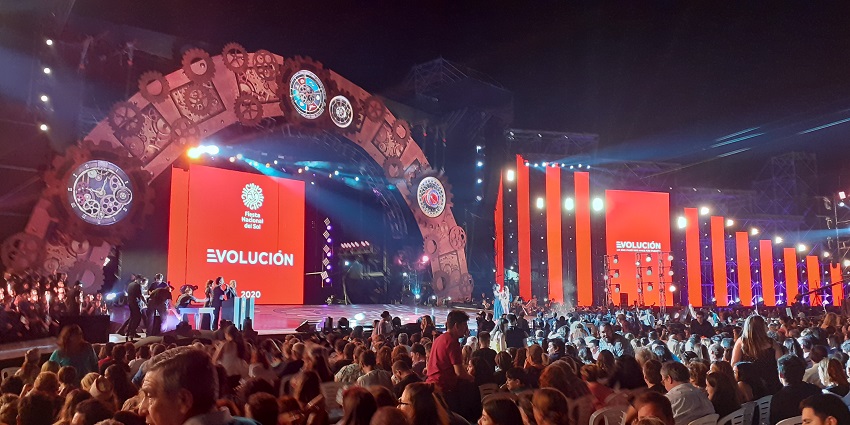
Photo: Enrique Guardia / Wikimedia Commons / Image For Representation Only
Celebrated on the coldest night of the year, San Juan is one of the most symbolic winter festivals in Bolivia, blending Catholic traditions with ancient Andean fire rituals. Historically marked by massive bonfires and fireworks to ward off evil spirits, modern celebrations now include lively street parties, traditional dances, and communal barbecues featuring sausages and hot drinks. The night is seen as a time for spiritual cleansing, renewal, and joyful togetherness with family and neighbors.
Location: Nationwide
Dates: June 23
Nearby Attractions: Samaipata ruins, Santa Cruz nightlife
8. Independence Day
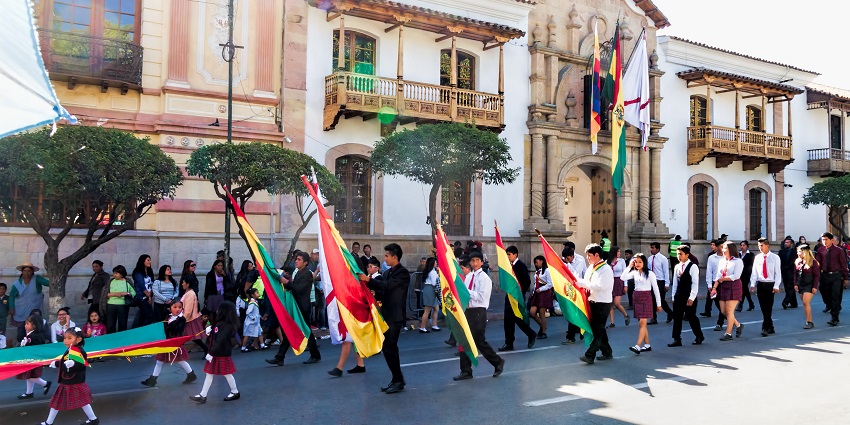
Photo: Dan Lundberg / Wikimedia Commons
Bolivians proudly celebrate their independence on August 6, from Spanish colonial rule, achieved in 1825. The entire nation bursts into patriotic fervor with colorful parades, marching bands, traditional dances, and public ceremonies. Schools, military units, and indigenous groups participate in commemorations that reflect Bolivia’s diverse identity. Sucre, the constitutional capital and cradle of independence, becomes the epicenter of the celebration, with streets adorned in red, yellow, and green, radiating unity and national pride
Location: Sucre and nationwide
Dates: August 6
Nearby Attractions: Tarabuco Market, Recoleta viewpoint
9. Ch’alla, Blessing Ritual
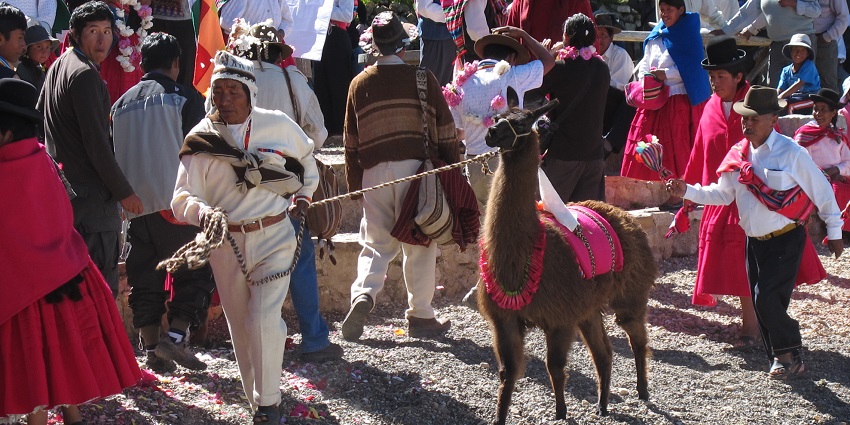
Photo: Kilobug / Wikimedia Commons / Image For Representation Only
Ch’alla is an ancient Aymara blessing ritual that holds deep spiritual significance in Bolivia, especially during Carnival and agricultural cycles. During the ceremony, families and communities sprinkle alcohol, flower petals, confetti, and even sweets on their homes, vehicles, and workplaces to honor Pachamama (Mother Earth) and attract prosperity. It’s both a sacred act and a festive occasion, filled with traditional music, dancing, and shared food, symbolizing a strong bond between people, nature, and gratitude.
Location: Throughout Andean Bolivia
Dates: Around Carnival season
Nearby Attractions: El Alto markets, Tiwanaku ruins
These famous festivals in Bolivia illuminate a country where tradition, faith, and celebration are deeply woven into everyday life. From the hypnotic rhythms of Oruro’s Diablada to the heartfelt prayers of Copacabana’s pilgrims and the joyful wish-making at La Paz’s Alasitas Fair, each moment offers a profound cultural connection. These events aren’t just spectacles—they’re living traditions that unite communities and captivate travelers. Ready to witness the magic firsthand? With TripXL, explore Bolivia’s most vibrant festivals in 2025 and immerse yourself in a cultural adventure that’s truly unforgettable.
Cover Photo: Albaro2020 / Wikimedia Commons


 WhatsApp
WhatsApp
 Twitter
Twitter









